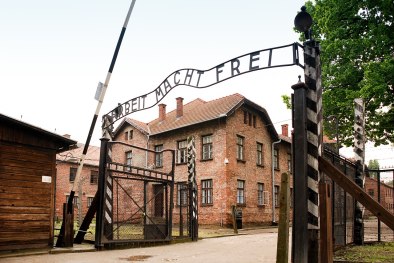The Holocaust was without a doubt one of the darkest moments in world history. Systematic murder, genocide, and the closest that humanity has come to exterminating an entire group of people. The Nazis ‘Final Solution’ of removing the Jewish influence from the European continent orchestrated by some of the most reviled men in history remains as a solemn reminder of how a heinous ideology can poison a national consciousness. Countless scholars, historians, and academics have written about the Holocaust’s significance. To many, the gruesome details of such a genocide are hard to internalize, even with visiting the concentration camp sites in Central Europe. Cartoonist and author Art Spiegelman took a unique approach in recounting his parents’ Holocaust saga; a graphic novel.
‘Maus‘ combines an intricate story of Art’s parents Vladek and Anja survival during the Holocaust and a present narrative where Art listens to the experience from his father, framing the ‘Maus‘ story. The most significant aspect of ‘Maus‘ is the anthropomorphic characters. They’re all drawn as specific animals; Jews as mice, Germans as cats, Americans as dogs, Poles as pigs, French as frogs, etc. The ethnic and racial comparisons between the animals and people seems straightforward on the surface; Germans are hunting Jews like cats hunt mice and are defeated by dogs, representing the Americans, but the metaphor delves much deeper than that. Transforming the characters into animals rather than drawing them as human was meant to illustrate the absurd notion of dividing people along racial lines. Others have argued that there’s not consistency to the metaphor as some characters that would be identified as one race are drawn as another. Racial division is a complex theme in ‘Maus‘ as readers could debate which was the more accurate depiction or whether it is necessary at all.

Art Spiegelman’s artwork and interpretation of characters as animals is a signature feature of the book
‘Maus‘ is definitely not for the faint of heart. Graphic scenes resurrect the Holocaust’s brutality in historical accuracy that is tinged with biographical influence. We often hear the official histories and narratives surrounding World War II history, but to hear it from someone who was there adds another level of chilling horror. ‘Maus’ certainly does grab your attention on many levels.
‘Maus‘ is split into two parts, ‘My Father Bleeds History’ and ‘Here My Troubles Began’. The story chronicles Vladek’s life before the war, his family’s survival in the Polish ghettos, and the brutal imprisonment at both the Auschwitz and Dachau concentration camps. The happy reunion between Valdek and Anja concludes the book on a grand cathartic note, the perseverance of hope against the clutches of death. What this book offers in place of the traditional historical research is the deeply personal connection between the author and subject; father and son. Interspersed with the father’s Holocaust survival are their various feuds on different subjects. Art makes it apparent that the most difficult part of his childhood was growing up with a father whose Holocaust experience altered his personality and habits. But then again, who wouldn’t have changed after going through what millions of Jews and other prisoners did in World War II.
One theme that stands out with ‘Maus‘ is the interpretation of race. Circling back to the characters depicted as animals, Art Spiegelman’s rendering sparks continuous debate over how racial division has been seen throughout history. The complexity inherent with race that groups like the Nazis perpetuated was reducing it down to its simplest terms. They saw people like the Jews as completely inferior to them and professed their own superiority. By categorizing enemies of the state in this way, the foundations of genocide were laid and persecution went unabated. I first read ‘Maus‘ in college and when the professor asked us about the different meanings behind why the characters were drawn as they were, she posed the question ‘what if the author meant to show that dividing people along racial lines was a stupid practice?’ We conjured our own responses, but there was no general consensus. The most significant theme was the most open-ended; there is never a clear-cut understanding of how or why people see race in different facets. Only that history records it for our posterity.

The entrance to Auschwitz I and the infamous gate ‘Arbeit Macht Frei’ (Work Sets You Free)
While not your typical academic interpretation of the Holocaust, ‘Maus‘ is certainly a must-have in the avid reader’s library. Just don’t try to read it all at once; the art alone is enough to make you set it down, walk away, and say to yourself, ‘Wow, I can’t believe humanity was capable of such evil, and how anyone lived to tell their story.’
I read Maus during college. At first, I wasn’t expecting much from a graphic novel, but it really surprised me. I was an English major, so I read many books. Very few stick out in my mind. This one did.
LikeLiked by 1 person
Maus has remained stuck in my mind since the first read. I still pick it up on occasion to read a couple chapters and it still freaks me out. Thank you for reading my post!
LikeLike
Very well written review.
LikeLiked by 1 person
I reread “Maus” every year, it is very thought provoking. This is a good review and captures some of my own thoughts on the book.
LikeLiked by 1 person
I re-read it a lot too. Every once in a while I pick it up to read a couple chapters and it’s still just as dark. Thanks for reading!
LikeLike